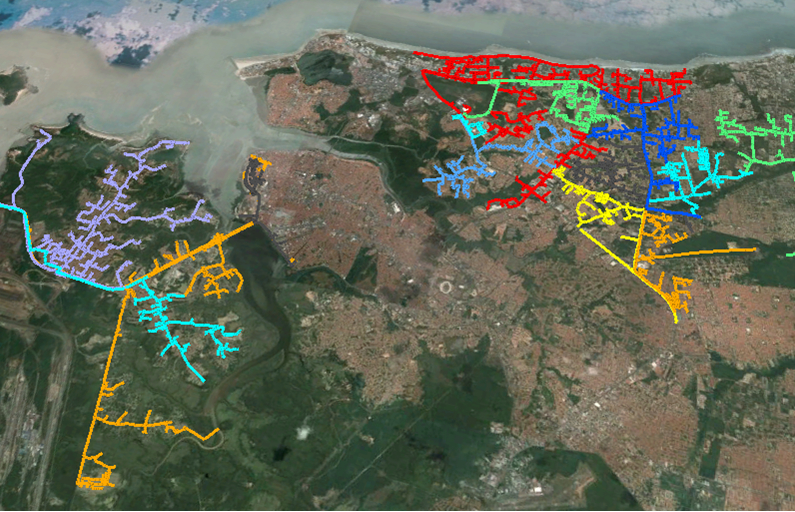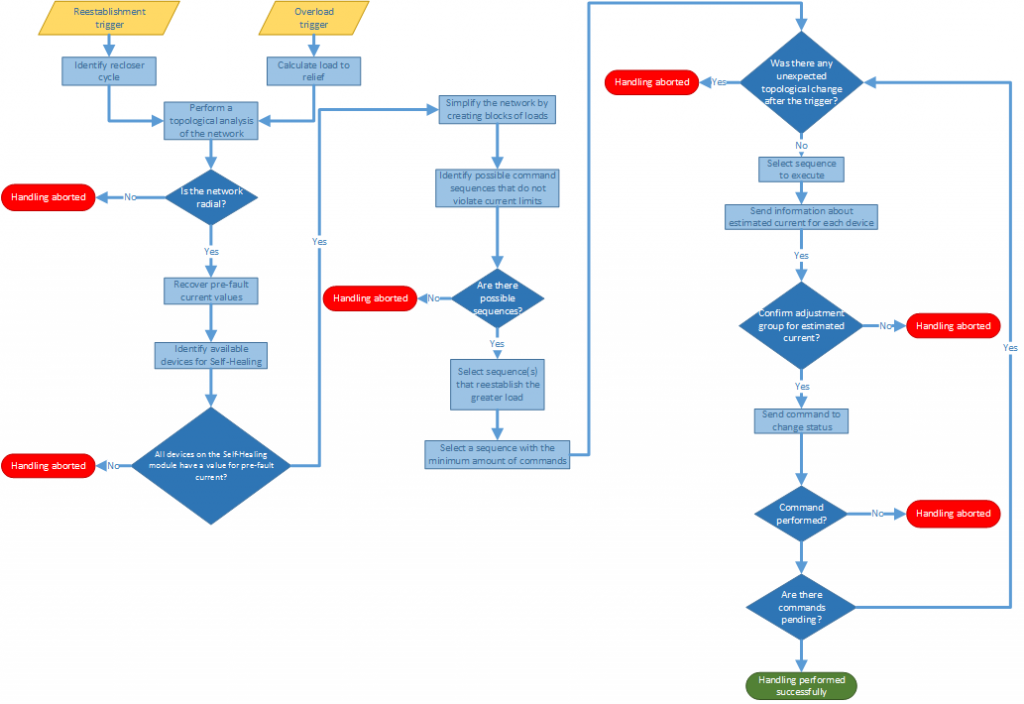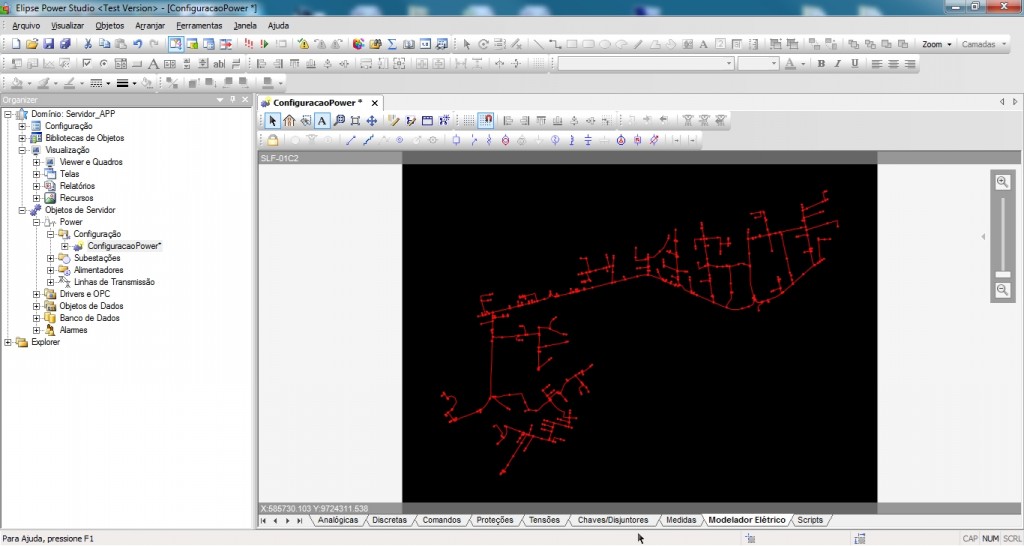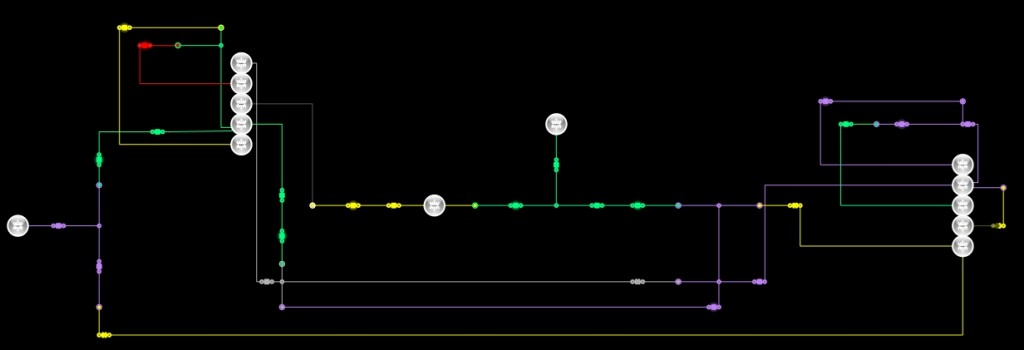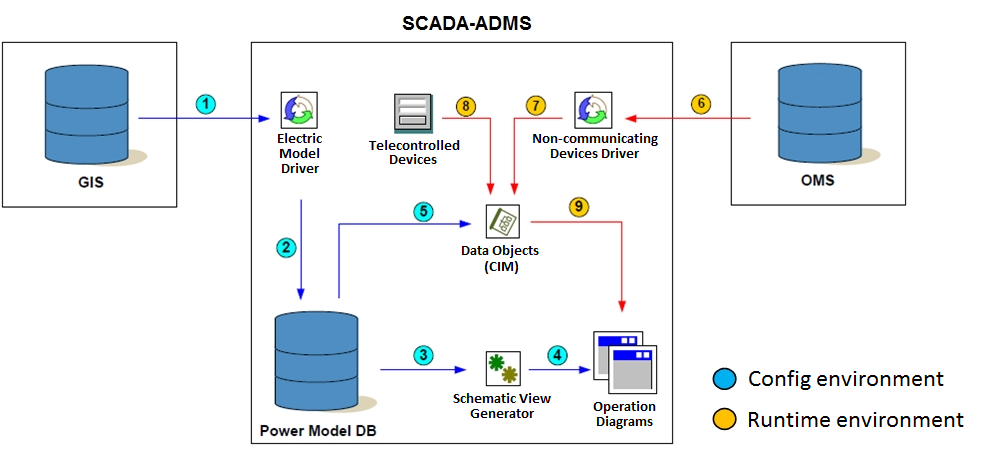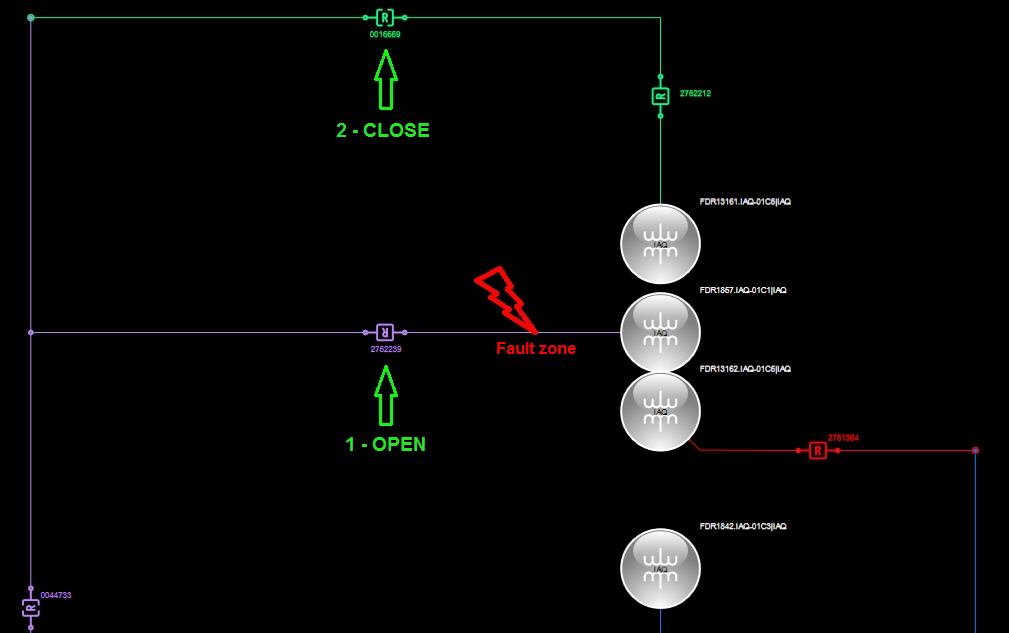Elipse Self-healing streamlines CEMAR’s energy system recomposition
In February, 2015, this technology allowed recovering, in 10 seconds, 9,463 out of 9,756 customers hit by an energy outage on São Luís distribution network, in northeastern Brazil
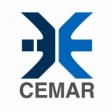
Needs
Improvements on operational efficiency and continuity indicators, made possible by investments in automating the maneuver equipment on medium voltage networks, caused a noticeable increase in such devices’ numbers in energy distributors in the past years. This increase makes it currently possible to perform a great deal of control actions in mere seconds, with no need move field teams to the actual power outage site, since these actions can all be made in the operation center in real time.
In order to consolidate these systems, as well as to improve quality and reliability of the means of communication, distributors have searched for new solutions that keep them efficient and more competitive in this market. This is the case of CEMAR (Companhia Energética do Maranhão, the power company of Maranhão state, in northeastern Brazil), which has been using, since December 2014, the centralized Self-healing system developed by Elipse Software in partnership with PowerSysLab.
The equipment used in the recently implemented Self-healing module is located in Maranhão’s capital city urban area, São Luis, with 81 feeders and 100 reclosers. These devices were installed according to their specific pre-operation areas in three circuits, maneuver criteria, and load sharing.
With this technology, CEMAR has achieved increasingly better numbers at the continuity indicators in the area served by Self-healing, since it can automatically calculate and execute the best set of maneuvers to be performed on the network to reduce dramatically the number of loads affected by power outages.
Solution
The Self-healing module uses algorithms such as Load Flow and Topological Processor to detect the best set of maneuvers to be performed remotely; the priority is to reestablish as many loads as possible in a safe and stable way. The system starts acting whenever a reestablishing or overload event is detected in the field equipment. Once detected the event, the module researches maneuvers sequences that comply to the network’s operational limits, in order to reestablish loads with as few maneuvers as possible to simplify the operation and avoid active devices degradation.
As soon as the maneuver to be executed is detected, the module matches the protection settings group in each device so that the selected ones can be opened or closed as needed. Then, it checks the quality of the considered information. If there are any inconsistencies in the current status or a pre-outage in the distribution network, this action is aborted.
Each device has its own measurement, which indicates its availability to participate in the solution or to generate a recomposition event. Additionally, reestablishing and overload events are configurable, which guarantees they will only occur in a timely manner, such as at the end of a protection device’s reclosing cycle or some time after an overload is detected, for example. Self-healing’s simplified flowchart is presented below.
SCADA/GIS/OMS integration
The chief difference of this tool is its ability to integrate with GIS (Geographic Information System) and OMS (Outage Management System) systems. This integration allows using the company’s pre-existing electric model, and also retrieving the switches’ current status with no remote control. To do so, the technology will first read, via import GIS driver, the electric network devices’ registration data, in order to detect names, acronyms, geolocation, connectivity, phases, and operational limits. The figure below illustrates the electric template of a feeder imported by Elipse Power.
From this imported electric template, a network layout module generates simplified operational diagrams, where you can identify the devices with remote control that can be maneuvered by the Self-healing module. The unsupervised switches, which can change the system’s topological status and influence the automatic decision process, are also highlighted on this list.
When executed, the Self-healing module updates the measurements from switches, breakers, and reclosers supervised at CIM (IEC 61970 – Common Information Model) data structure, to then monitor the network’s operational conditions and act upon then when necessary. The flowchart of information monitored by Elipse platform and its integration with GIS and OMS systems are illustrated below.
Real-life example
On February 3, 2015, the Self-healing system was employed successfully for the first time: after constant protection of 11C1 breaker (Feeder 1) at IAQ (Itaqui) substation, the device finished its reclosing cycle and went on lockout due to a tree on the network. This caused the technology to isolate the segment between 11C1 substation’s breaker and 2752239 pole’s recloser, thus recovering the de-energized zone via 11C5 feeder (Feeder 5), also from IAQ substation.
In this occurrence, the services of 9,463 out of 9,756 clients from Feeder 1 were recuperated in less than 10 seconds: it took the Self-healing system 132 milliseconds to calculate the sequence of maneuvers to be executed, the 2752239 recloser five seconds to confirm the opening command, and the 0016659 recloser another five seconds to issue its closing. In short, it took no more than 10 seconds to isolate the fault and recompose the de-energized circuit.
In addition to the time saved in partial load recovering, this tool has also enhanced the operation and maintenance resources quality, since the real-time dispatcher had to send the field teams to cover only the defective segment (between IAQ substation and 2752239 pole).
Benefits
This case illustrated the features of CEMAR’s medium tension (13,8KV) distribution network, with emphasis to the automatic recomposition process introduced by the Self-healing module. To Ronnie Santiago Loureiro, CEMAR’s automation executive, employing this technology in a centralized system integrated to geo-referencing and operation platforms has increased significantly the system’s reliability and availability.
According to Loureiro, this software has introduced a new philosophy to the operational center, one of facilitating control in order to enable other activities, like sending field teams to unrepaired places. Therefore, the solution optimizes maintenance resources and reduces the time spent repairing occurrences.
“A notable benefit in this project is the constant validation and systemization of the elements’ registration data in geo-referencing system with the field, which in turn makes for more reliable information because if the registration data is not validated, the Self-healing module won’t work properly. Additionally, being able to coordinate protection and to perform maneuvers in real time are steps forward in network operation,” he added.
The main benefits provided by Elipse’s technology to CEMAR are:
- Safe, stable recomposition of the largest possible load in less than 3 minutes, which improves duration and frequency indicators (DEC and FEC).
- By considering overload events, the solution avoids power outages, which also improves duration and frequency indicators (DEC and FEC).
- Because it doesn’t use any scripts logic to calculate maneuvers, the solution was quickly implemented and has low maintenance costs.
- A series of pre-existing devices from different vendors were integrated, such as NU-Iec’s and Tavrida’s sectionalizers and reclosers, and Schweitzer’s IED-controlled substation breakers, thus preserving the investments already made in the network automation process.
Datasheet
Client: CEMAR
Software: Elipse Power ADMS, Elipse Power Diagram e Elipse Power Self-healing
I/O Points: 200,000
I/O Drivers: DNP 3
